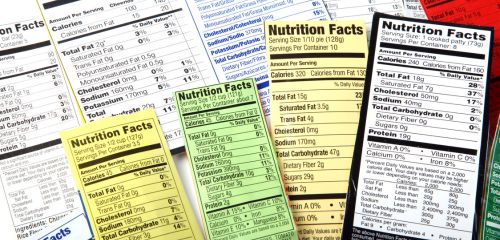As someone who has always been conscious about what I eat, navigating the maze of food labels can sometimes feel like deciphering a secret code. However, over time, I’ve come to realize that understanding food labels is crucial for making informed choices about the foods we consume daily. In this article, I’ll share with you some insights into decoding food labels, enabling you to make healthier and more conscious decisions about the foods you buy.
Understanding Food Labels: Why Are They Important?
Before diving into the nitty-gritty details of food labels, let’s understand why they are so important. Food labels provide valuable information about the nutritional content of a product, helping us to make informed choices about what we eat. By carefully examining these labels, we can monitor our intake of nutrients such as calories, fat, sugar, sodium, and vitamins, which play a significant role in our overall health and well-being.

Decoding the Label: A Simple Guide
1. Serving Size
The serving size is the first thing you’ll notice on a food label, and it’s essential for understanding the rest of the information provided. Pay attention to the serving size, as all the nutritional values listed on the label are based on this portion. Be mindful of how much you’re actually consuming compared to the serving size, as it can vary significantly.
2. Calories
Next, look at the number of calories per serving. Calories provide a measure of how much energy you get from a serving of the food. If you’re watching your weight, keeping track of your calorie intake can help you maintain a healthy balance.
3. Nutrients to Limit
These include fats, cholesterol, sodium, and added sugars. Try to limit your intake of these nutrients, as consuming too much can increase your risk of certain health conditions such as heart disease, high blood pressure, and obesity. Look for foods with lower amounts of these nutrients.
4. Nutrients to Include
These are nutrients that are beneficial to your health, such as dietary fiber, vitamins, and minerals. Aim to include more of these nutrients in your diet by choosing foods that are rich in them. For example, opt for whole grains, fruits, vegetables, and lean proteins.
5. % Daily Value (%DV)
The %DV indicates how much of a particular nutrient one serving of the food contributes to your daily recommended intake. It’s based on a 2,000-calorie diet, so your needs may vary depending on your age, gender, and activity level. Use the %DV to gauge whether a food is high or low in a particular nutrient. Generally, 5% DV or less is considered low, while 20% DV or more is considered high.
Key Terms to Look Out For
1. Organic
Foods labeled as “organic” are produced without synthetic pesticides, fertilizers, antibiotics, or hormones. Choosing organic products can reduce your exposure to harmful chemicals and support environmentally friendly farming practices.

2. GMO-Free
“Non-GMO” or “GMO-free” labels indicate that a product does not contain genetically modified organisms (GMOs). While the debate over the safety of GMOs continues, opting for non-GMO products may provide peace of mind for those concerned about potential health and environmental risks.
3. Whole Grain
Look for products labeled as “whole grain” or “100% whole wheat” to ensure you’re getting the nutritional benefits of the entire grain, including fiber, vitamins, and minerals. Whole grains can help lower your risk of heart disease, diabetes, and certain cancers.
4. Natural vs. Artificial
The term “natural” on food labels can be misleading, as there is no standard definition or regulation for its use. On the other hand, “artificial” or “synthetic” ingredients refer to substances that are chemically manufactured and may have potential health risks. When possible, choose foods with natural ingredients and avoid those with artificial additives and preservatives.
Putting It Into Practice
Armed with this knowledge, I’ve become more confident in my ability to make informed choices about the foods I buy and consume. Instead of being swayed by flashy packaging or catchy slogans, I now take the time to read and understand food labels, ensuring that I’m nourishing my body with the nutrients it needs to thrive.
Conclusion
Understanding food labels is a valuable skill that empowers us to take control of our health and well-being. By learning to decipher these labels and making informed choices about the foods we eat, we can cultivate healthier eating habits and enjoy a better quality of life. So, the next time you’re at the grocery store, take a moment to examine the labels on the products you’re considering – your body will thank you for it.

